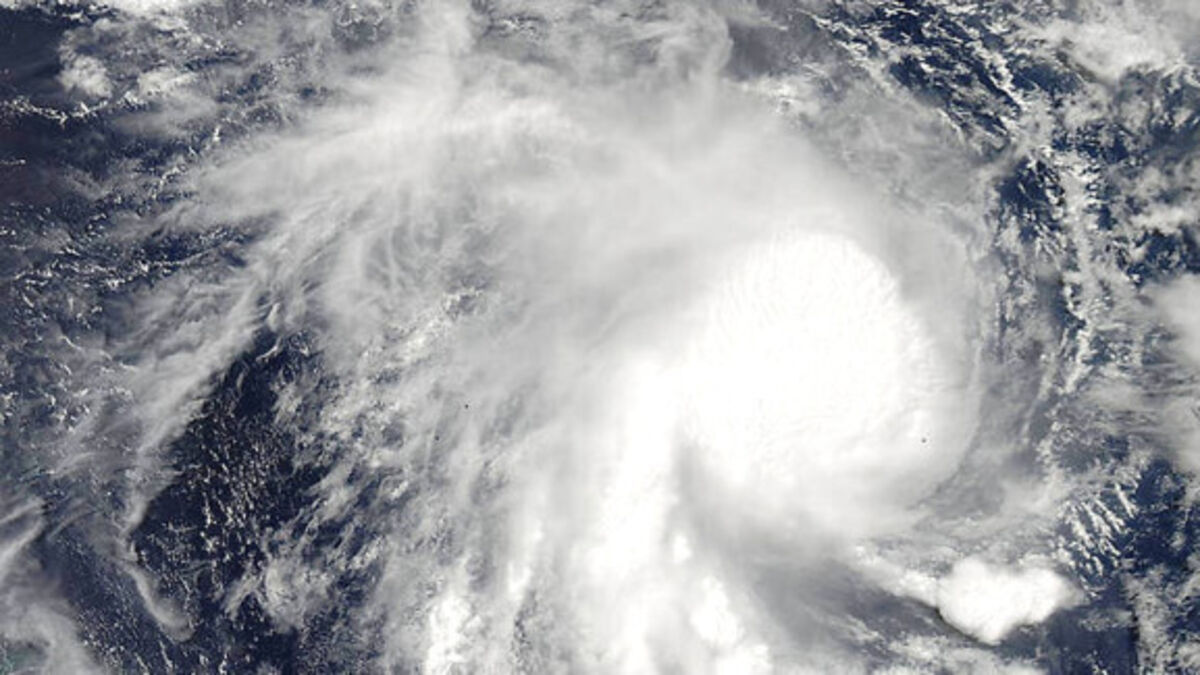India braces for twin cyclones: Hamoon may hit Andhra on October 25, Tej intensifies

India braces for twin cyclones: Hamoon may hit Andhra on October 25, Tej intensifies
The development of Cyclone Tej into a ‘severe cyclonic storm’ in the Arabian Sea, alongside the emergence of Cyclone Hamoon in the Bay of Bengal, has drawn the attention of meteorological agencies and local authorities.
The India Meteorological Department (IMD) has been closely monitoring the progress of Cyclone Hamoon, noting its movement toward the Andhra Coast and the likelihood of further intensification into a depression over the West Central Bay of Bengal. The forecast suggests that the depression over the Bay of Bengal may potentially evolve into a low-intensity cyclonic storm by October 24.
Despite the simultaneous presence of these twin cyclones, spanning a considerable distance of over 2,500 km, the IMD anticipates that they will maintain a significant separation from each other. Consequently, the respective tracks of Cyclone Tej in the Arabian Sea and Cyclone Hamoon in the Bay of Bengal are expected to remain distinct and independent of each other.
The IMD’s continued monitoring and assessment of these weather phenomena serve as crucial early warning measures, providing valuable information to local communities and authorities, enabling them to undertake necessary precautionary measures and implement disaster preparedness protocols. By emphasizing the expected trajectory and behavior of the cyclones, the IMD aims to facilitate informed decision-making and proactive measures to mitigate potential risks and safeguard vulnerable regions from the impact of these natural calamities.

As the situation evolves, sustained vigilance and preparedness efforts are vital in ensuring the safety and well-being of communities residing in the potentially affected areas. The IMD’s ongoing monitoring and dissemination of timely updates play a pivotal role in enhancing the resilience and adaptive capacity of these communities in the face of impending natural disasters.
The Indian Meteorological Department (IMD) utilizes specific criteria to categorize weather systems based on their three-minute average maximum sustained wind speeds. These classifications are instrumental in assessing the potential impact and severity of cyclonic disturbances.
 A system is classified as cyclonic when its three-minute average maximum sustained wind speeds range between 63-88 kmph. Subsequently, the categorizations progress from a severe cyclonic storm (wind speeds between 89-117 kmph) to a very severe cyclonic storm (wind speeds between 118-165 kmph), and finally to an extremely severe cyclonic storm (wind speeds between 166-220 kmph), according to the weather agency’s guidelines.
A system is classified as cyclonic when its three-minute average maximum sustained wind speeds range between 63-88 kmph. Subsequently, the categorizations progress from a severe cyclonic storm (wind speeds between 89-117 kmph) to a very severe cyclonic storm (wind speeds between 118-165 kmph), and finally to an extremely severe cyclonic storm (wind speeds between 166-220 kmph), according to the weather agency’s guidelines.
Named Hamoon by Iran, the cyclone is currently in its formative stage, located in the west-central Bay of Bengal, following its northeastward movement on the night of October 22. The IMD’s projections suggest that Hamoon’s influence may lead to light to moderate rainfall in certain areas of coastal Odisha on October 23, followed by more widespread rainfall in the region on October 24-25. As the cyclone approaches the Bangladesh coast, it is expected to weaken, with its anticipated landfall set to occur between Khepupara and Chittagong on October 25.
The IMD’s detailed assessments and forecasts serve as essential tools for disaster management authorities and local communities, enabling them to make informed decisions and undertake necessary precautionary measures in preparation for the potential impact of the cyclone. By providing timely updates and accurate information, the IMD plays a crucial role in enhancing the resilience and preparedness of vulnerable regions, facilitating the implementation of effective disaster management strategies and ensuring the safety and well-being of communities in the cyclone’s path.
Tej, named by India, is currently situated in the west-central Bay of Bengal following its northeastward movement on the night of October 22. According to the latest bulletin from the Indian Meteorological Department (IMD), Tej is expected to intensify into a cyclonic storm within the next 12 hours. The forecast suggests that Tej is likely to continue its trajectory in a north-northeastward direction and cross the Bangladesh coast, specifically between Khepupara and Chittagong, by the evening of October 25, potentially as a deep depression.
In anticipation of the cyclone’s impact, the IMD has issued warnings about the likelihood of light to moderate rainfall in various northern and southern coastal districts, as well as in areas such as Keonjhar, Mayurbhanj, and Dhenkanal. Weather scientist US Dash has further emphasized that the system is expected to remain approximately 200 km away from the Odisha coast. Consequently, the influence of the cyclone may lead to light to moderate rainfall in coastal Odisha on October 23, with the potential for more widespread rainfall over the following two days.
Furthermore, there are projections indicating that Tej might make landfall near the Oman or Yemen border on October 24. These developments emphasize the need for proactive preparedness and precautionary measures by local authorities and communities in potentially affected regions. The IMD’s continuous monitoring and dissemination of updates play a vital role in ensuring the safety and well-being of communities and in facilitating effective disaster management protocols to mitigate the potential impact of the cyclone.




